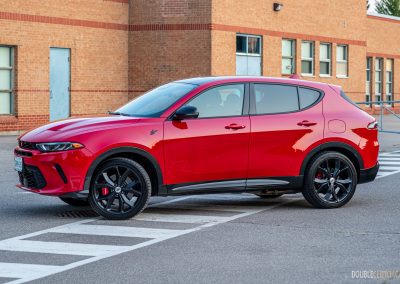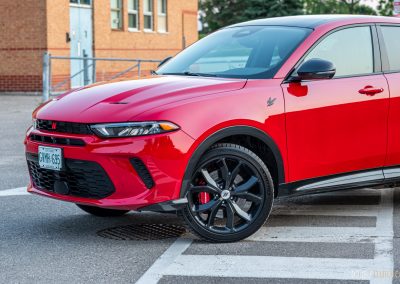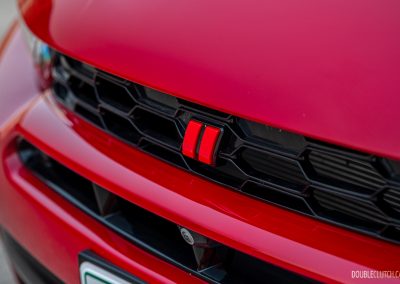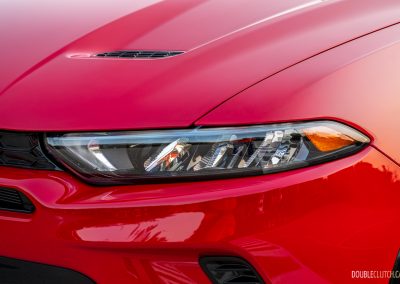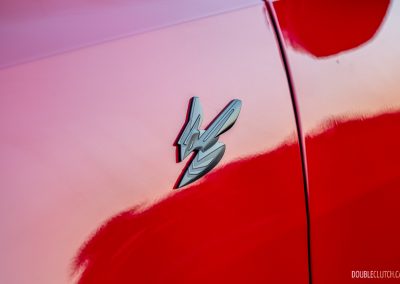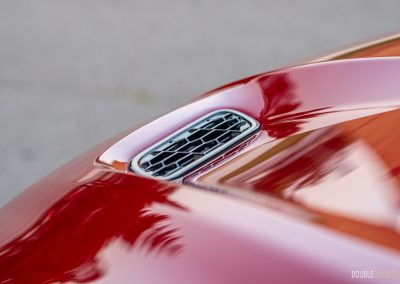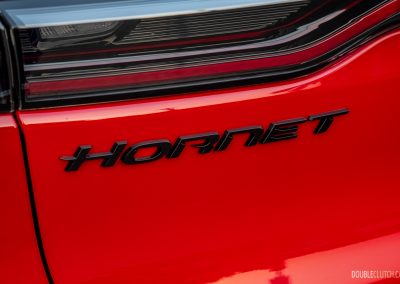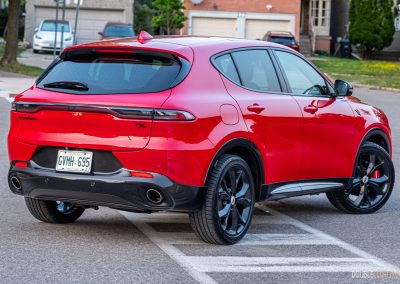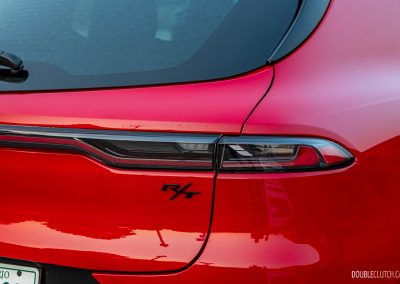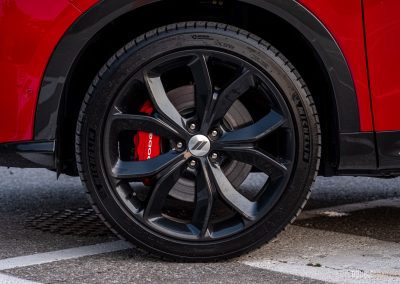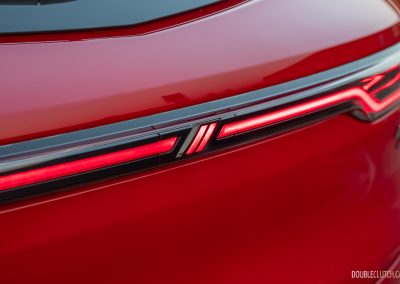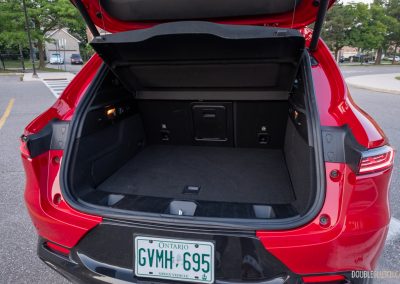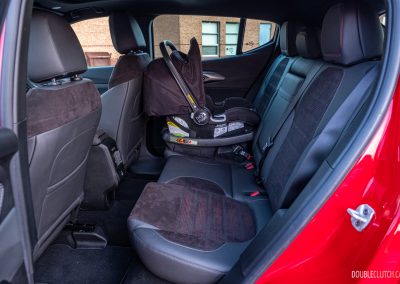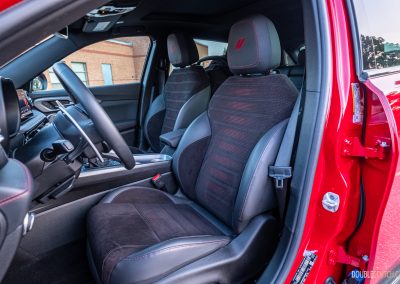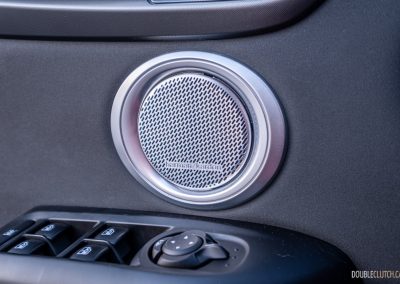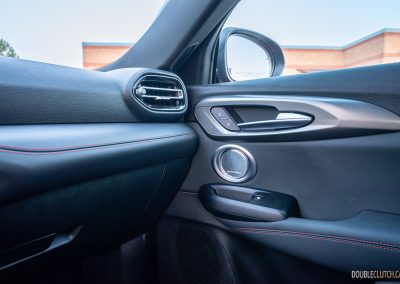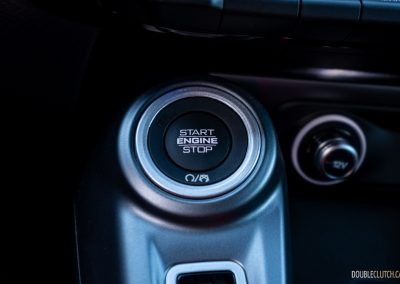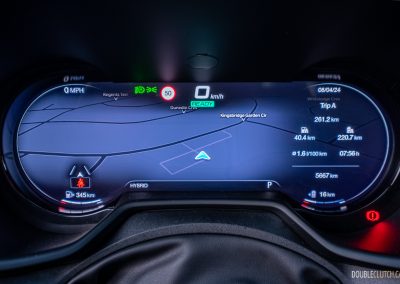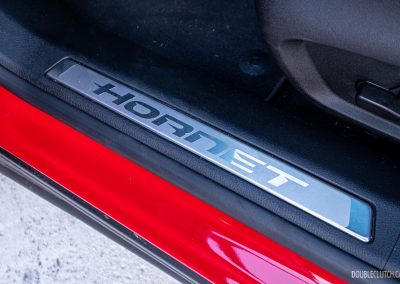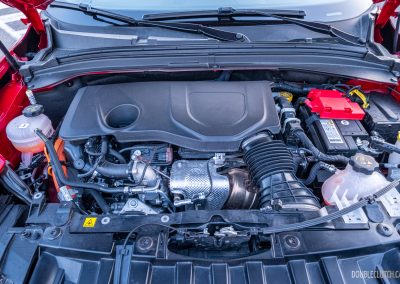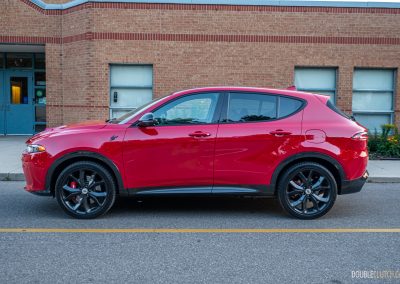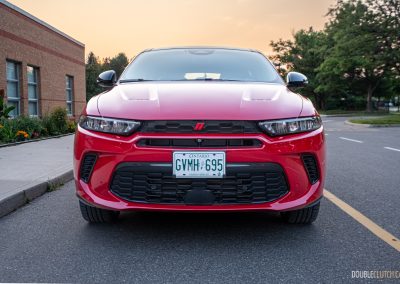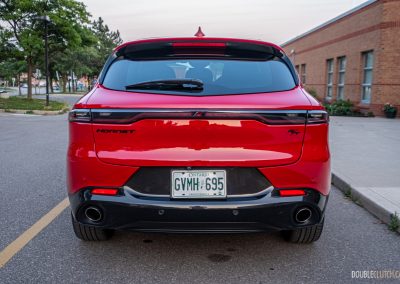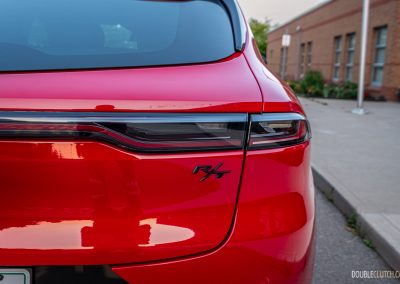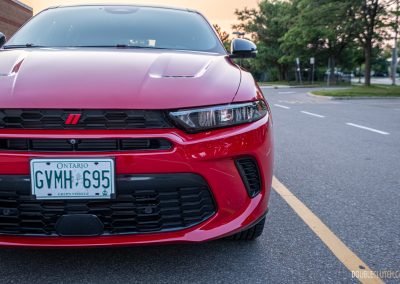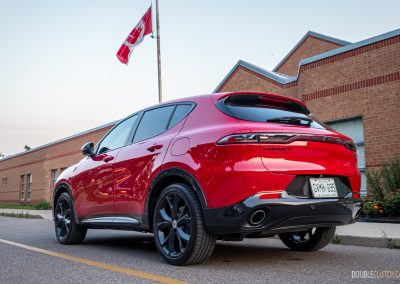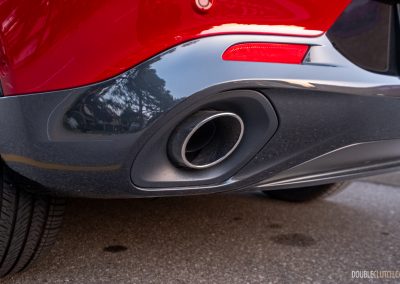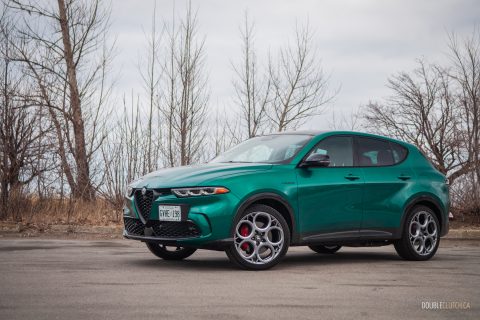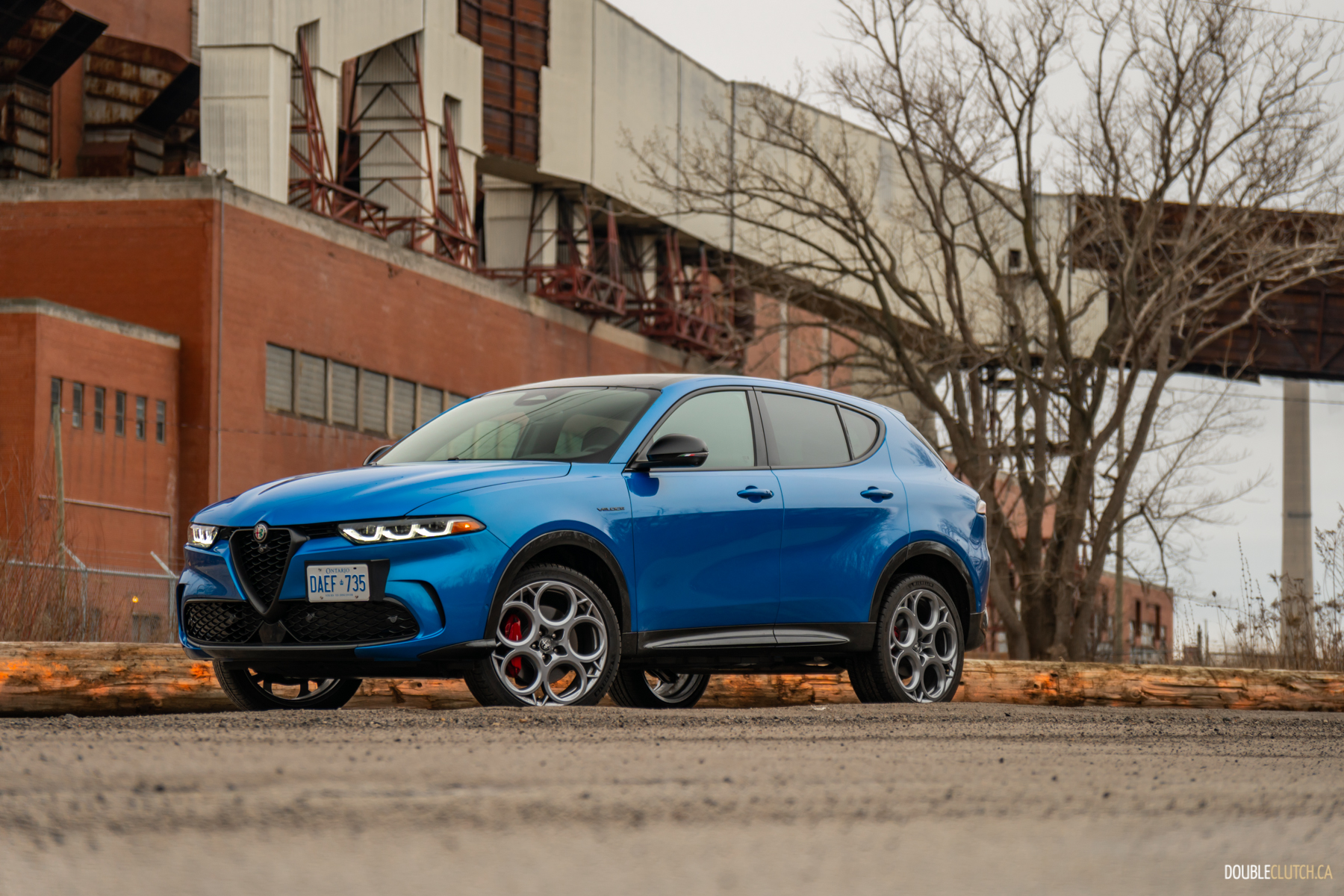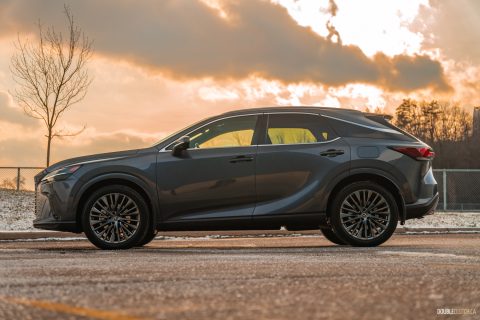Do you know what Dodge makes today? The Challenger is dead, the reborn Charger isn’t here yet, and don’t say Ram because that was spun off into its own brand way back in 2009. I had to look this up: the only 2024 model-year vehicles with a Dodge badge are the Durango and Hornet. Slim pickings for sure, especially if you’re used to Dodge’s muscle car era. The 2024 Dodge Hornet R/T PHEV certainly isn’t a throwback to that era, but it’s a solid offering — price notwithstanding.
Anecdotally, I still see a lot of newer Chargers and Challengers on the road today, so a compact crossover doesn’t seem like it fits the brand. You see, the Hornet is a badge-engineering job, based on the Alfa Romeo Tonale. And the Alfa bones run deep, clearly looking like this thing started out as an Alfa, then given a very minor makeover for the Hornet.

It’s an attractive little thing, finished in Hot Tamale red and looking more European than American from many angles. There’s a very Porsche Macan-esque look from the rear, sharing a similar connected rear tail light signature, with a light-up Dodge logo in the middle. The front end pulls off the signature Dodge look — with headlights that remind me of my parents’ 1999 Caravan — but I think the Tonale has more character. The signature Alfa grille is prettier, but the Hornet still looks good even with its more basic nose job. I dig the aggressive Hornet logo on the front fenders, and the black 20-inch wheels fill the wheel wells appropriately.
As for the interior, I wanted to start off by saying it’s very Alfa, but new-age Alfa interiors are very Dodge, so this Hornet has a bit of an Alfa interior which is pretty much a Dodge interior, so this is a … Dodge interior, I think? Smart-assness aside, the Hornet does share a lot with the Tonale, and borrows many bits and pieces from both the Alfa Romeo and Dodge parts-bins. With the Stelvio Quadrifoglio still very fresh in my mind, the Hornet definitely feels more European, especially with its driving position and massive, column-mounted paddle shifters behind the wheel. If you blindfolded me and took me from the Stelvio to the Hornet, you’d have to convince me it isn’t an Alfa.

But I digress. The interior is compact and sporty, with comfortable seats finished in a mix of black leather and suede, with some red thrown in for good measure. The rear seats are cramped, but not unexpected in this barely-a-crossover, kind-of-a-hatchback thing. The infotainment and gauge cluster also share identical layouts and interfaces to the Tonale; the graphics are simple and it’s sometimes a little slow to respond, but it’s generally OK overall, and you have a few layout options for the gauge cluster. The 14-speaker Harman Kardon audio system is pretty good and punchy, but could use some better imaging.
This particular Hornet is the plug-in hybrid, although like the Tonale, Dodge offers a conventional turbo-four on lower trims — and it might just be the better value here. The PHEV starts with a 1.3-litre turbocharged four-cylinder engine mated to a six-speed automatic transmission. Bolted to all of that is a 90 kW electric motor powering the rear wheels, and the 15.5 kWh battery provides up to 53 kilometres of EV-only range. Total system output is 288 horsepower and a stout 383 pound-feet of torque, and in my city-heavy stint with the gas engine barely kicking in resulted in a lithe 1.6 L/100 kilometres.
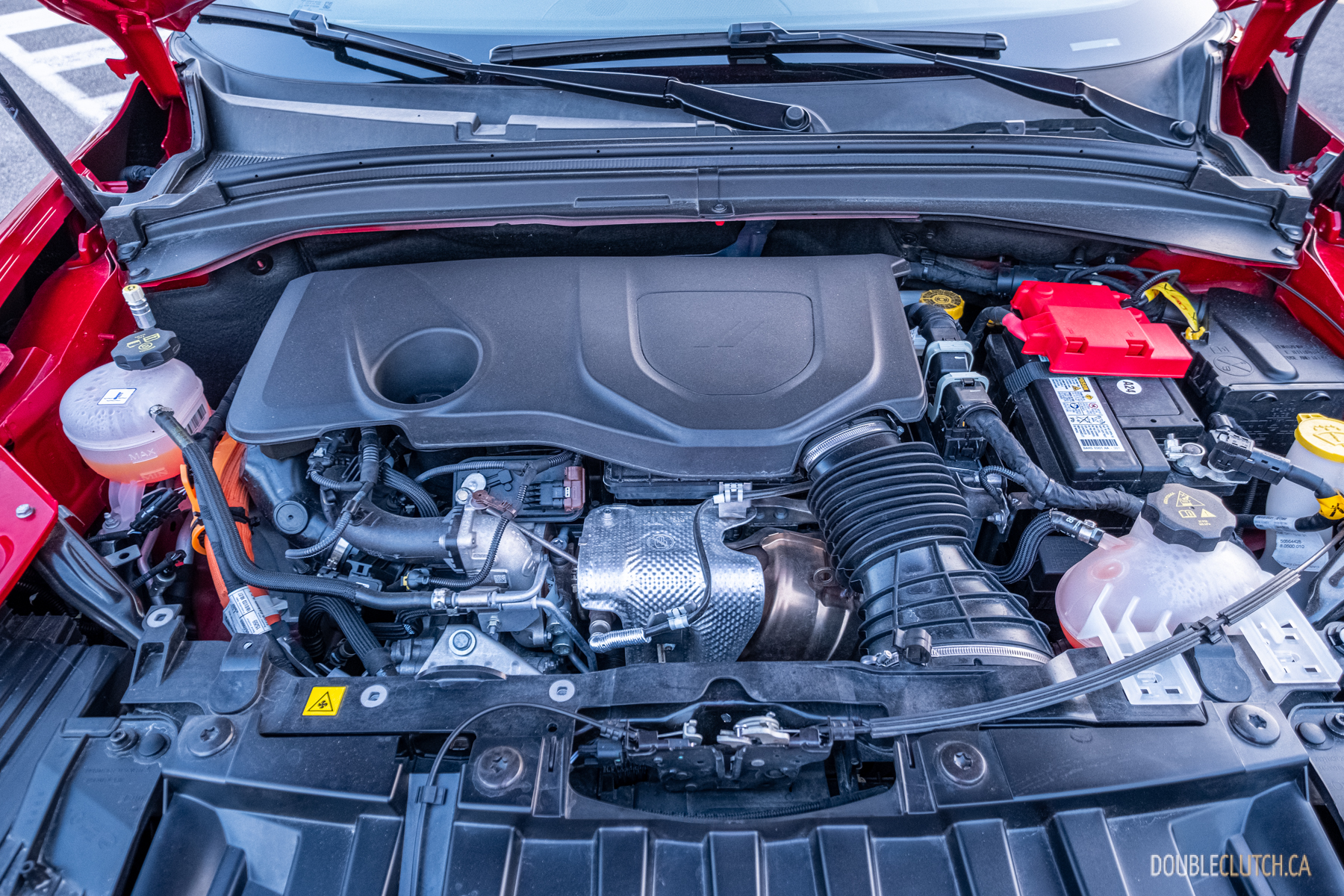
Like most other PHEVs, the Hornet lets you switch between hybrid and EV-only modes. In the latter, it feels like a typical EV: torquey and quiet, and although power seems adequate compared to the rip-your-face-off feeling in other EVs, it’s perfect for puttering around town. In hybrid mode, and with the “sport” drive mode selected, the Hornet feels rather althetic. Its 383 lb-ft of torque makes acceleration feel effortless, even if you think you’re going faster than you really are. There’s even a boost function called PowerShot, giving you an extra 30 horsepower for 15-second spurts. The gas engine stays quiet unless you really flog it; under heavy acceleration, it moans and groans as you’d expect a 1.3-litre four-cylinder engine would.
Working with that all-wheel-drive powertrain is a suspension certainly tuned more towards sportiness than comfort, reminding you of the Hornet’s Alfa Romeo roots. Ditto the steering, which feels surprisingly sharp. It all makes for a rather enjoyable driving experience overall, feeling unexpectedly European — from a Dodge, of all things.
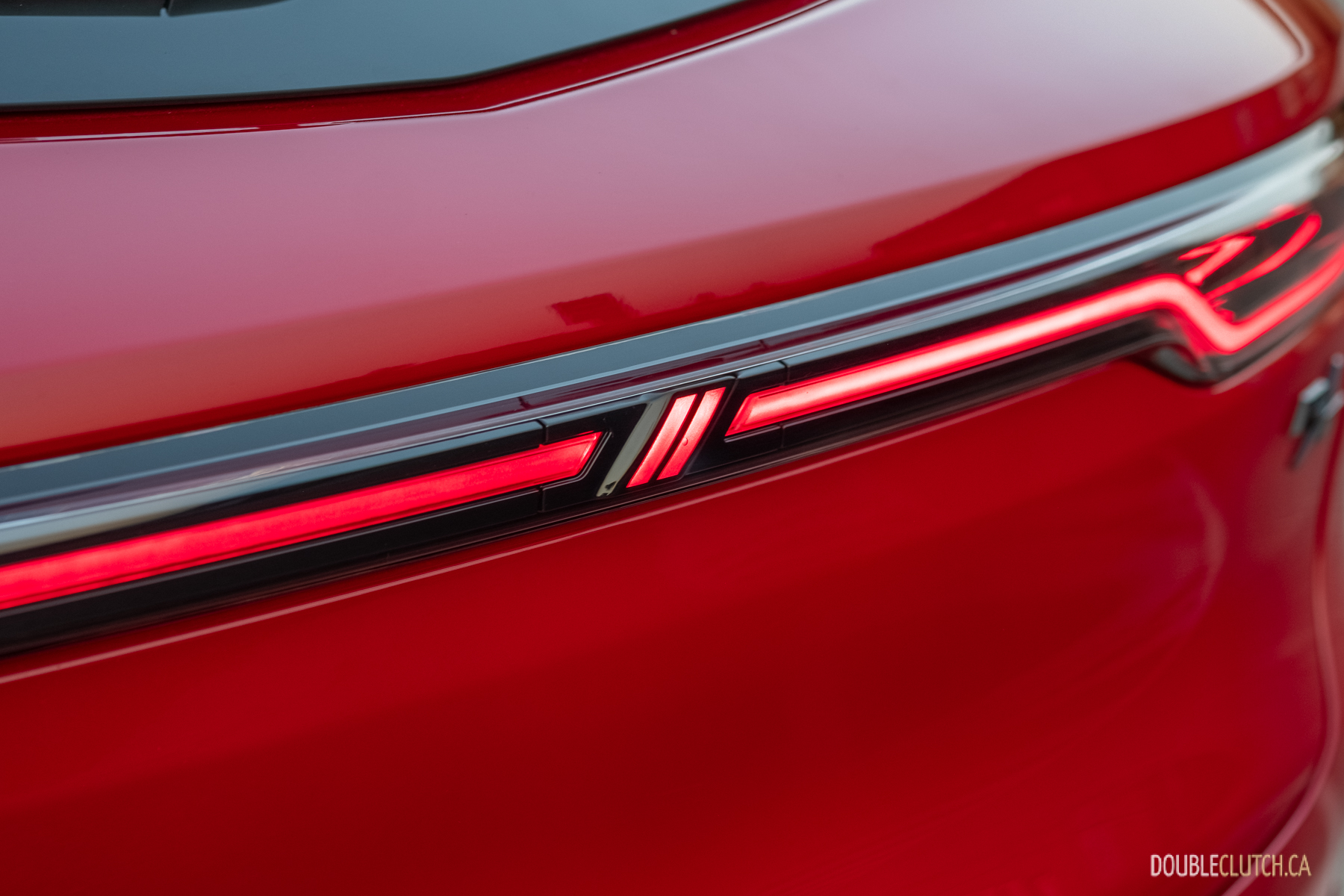
But therein lies the problem. The Euro-esque experience comes with a Euro-esque price tag: $64,040 as-tested is a lot to pay for a small Dodge crossover. This isn’t necessarily a knock against Dodge; I’m sure this is a play to move Dodge into a new segment, but it’s just not a price point in which they’ve operated before with this kind of vehicle. Most wouldn’t think twice at paying that kind of money for a Charger or Challenger with a big V8, but for similar money, the Tonale offers more character in its design and arguably more brand cachet.
I’m conflicted, because while the 2024 Dodge Hornet R/T PHEV is a great product overall, I just can’t see traditional Dodge buyers gravitating towards a compact hybrid crossover with a high price tag — at least until dealer incentives kick in and turn it into a fantastic value.

